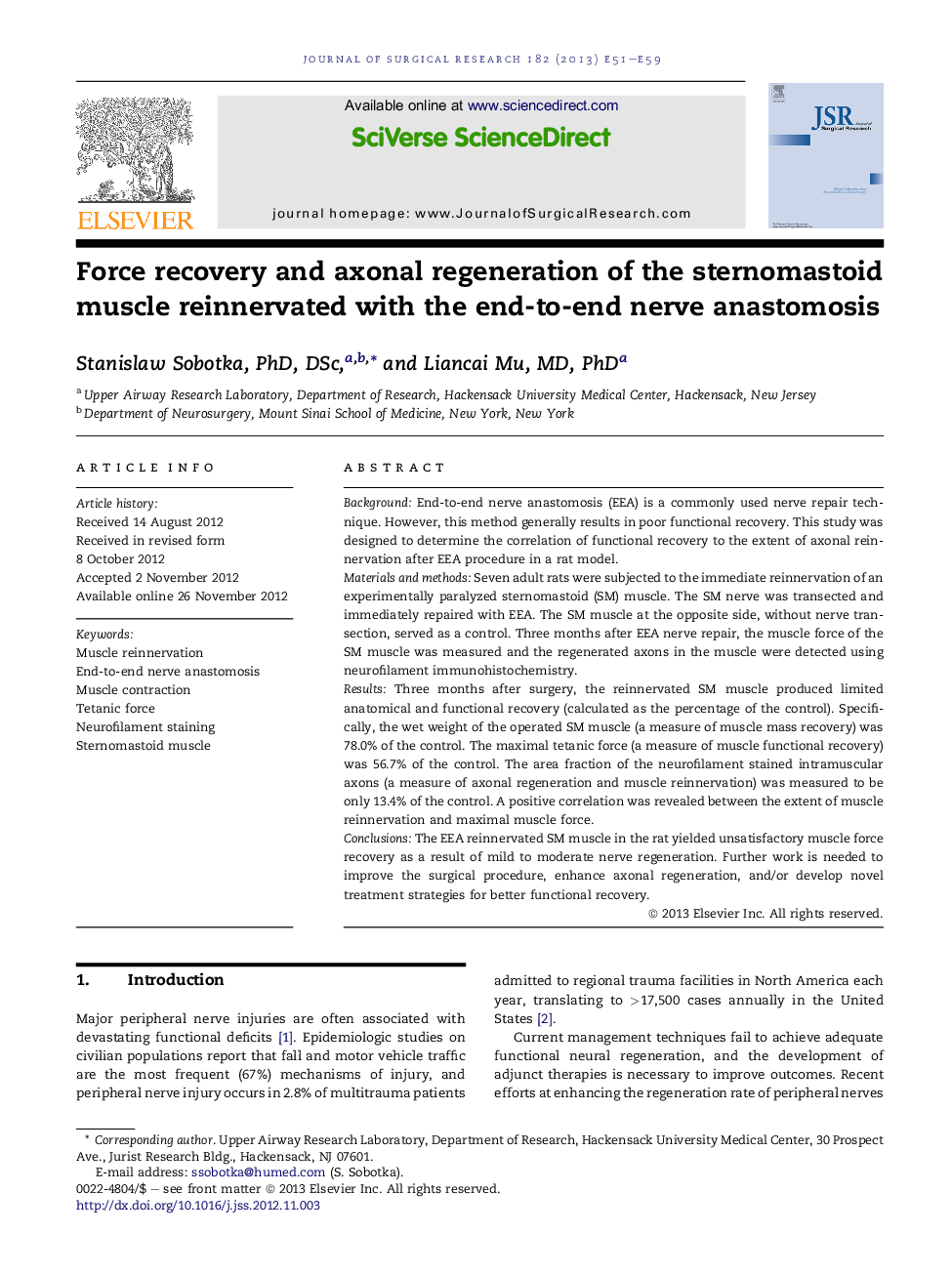| Article ID | Journal | Published Year | Pages | File Type |
|---|---|---|---|---|
| 4301019 | Journal of Surgical Research | 2013 | 9 Pages |
BackgroundEnd-to-end nerve anastomosis (EEA) is a commonly used nerve repair technique. However, this method generally results in poor functional recovery. This study was designed to determine the correlation of functional recovery to the extent of axonal reinnervation after EEA procedure in a rat model.Materials and methodsSeven adult rats were subjected to the immediate reinnervation of an experimentally paralyzed sternomastoid (SM) muscle. The SM nerve was transected and immediately repaired with EEA. The SM muscle at the opposite side, without nerve transection, served as a control. Three months after EEA nerve repair, the muscle force of the SM muscle was measured and the regenerated axons in the muscle were detected using neurofilament immunohistochemistry.ResultsThree months after surgery, the reinnervated SM muscle produced limited anatomical and functional recovery (calculated as the percentage of the control). Specifically, the wet weight of the operated SM muscle (a measure of muscle mass recovery) was 78.0% of the control. The maximal tetanic force (a measure of muscle functional recovery) was 56.7% of the control. The area fraction of the neurofilament stained intramuscular axons (a measure of axonal regeneration and muscle reinnervation) was measured to be only 13.4% of the control. A positive correlation was revealed between the extent of muscle reinnervation and maximal muscle force.ConclusionsThe EEA reinnervated SM muscle in the rat yielded unsatisfactory muscle force recovery as a result of mild to moderate nerve regeneration. Further work is needed to improve the surgical procedure, enhance axonal regeneration, and/or develop novel treatment strategies for better functional recovery.
